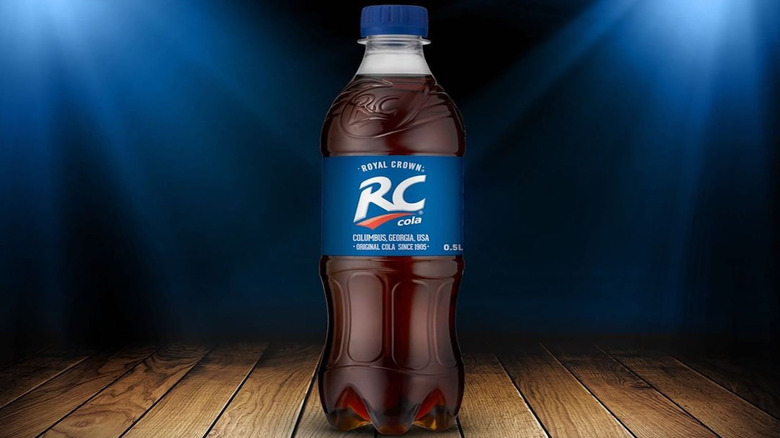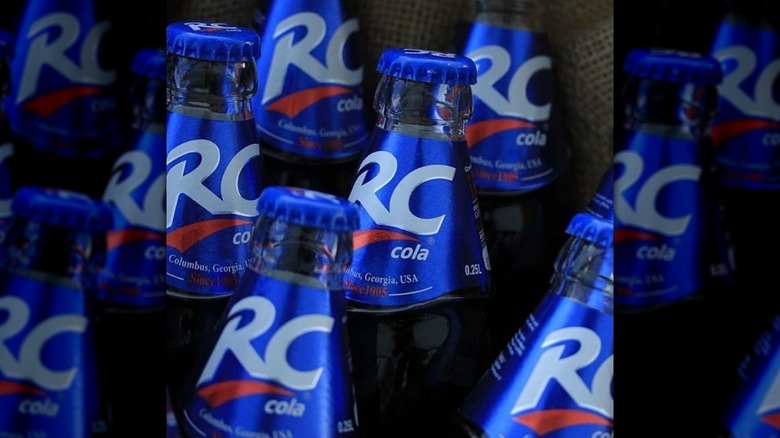RC Cola's Origins Are Rooted In A Grocery Store Basement
The origin of RC Cola and its decades-long reign as a contender in the soft drink market is a bit of a David-and-Goliath story. Introduced in 1905, the brand traces its roots to a quietly rebellious grocer. A mild-mannered pharmacist by trade, Claud Hatcher was the owner of two drug stores in Georgia when he decided to shutter the pharmacies and join his father's Columbus-based wholesale grocery business.
At the time, Coca-Cola was all the rage. Back then, the soft drink, introduced in 1886 by Dr. John S. Pemberton, was sold to grocers in syrup form (remember old-school soda fountains?). The grocers, in turn, combined the syrup with carbonated water to create soda. Some businesses, including the Hatcher Grocery Company, distributed bottled Coca-Cola to customers at cost as a loyalty perk. By carefully guarding the secret formula for the syrup — still a closely held recipe even today — Coca-Cola had distributors like Claud Hatcher and his father, Lucius, on the ropes.
Fed up with increasing prices, the younger Hatcher decided to create his own soft drink syrups, experimenting with flavors and recipes in the basement of the Hatcher Grocery Company. First up, Royal Crown Ginger Ale. But Claud didn't stop there. He kept combining and tasting flavors until he had a fully developed line of fruit-flavored carbonated soft drinks. He named the brand Melo. Even though Hatcher's debut soda wasn't actually a cola-flavored soft drink, the basement of the family grocery business was where it all began.
The birth of a cola brand
Claud Hatcher was onto something. By 1907, his experiment had morphed into a full-fledged business. Hatcher and his father knew they had an opportunity. They partnered in a new venture, founded the Union Bottling Company, expanded the operation, and set their sights on introducing their own branded cola. The result, Chero-Cola, was a hit — such a hit that, in 1912, they changed the name of their business to the Chero-Cola Company and started to franchise.
With Chero-Cola leading the way, the company had 700 franchised bottling plants on the books within eight years. Coca-Cola was not amused, ultimately forcing the Hatchers to drop the word "cola" from their brand. By 1920, demand for Chero had dropped off significantly. The Hatchers pivoted again. They ceased production of the cola beverage and began producing a fruity soft drink they marketed as Nehi. Here's where it gets tricky. They changed the company name yet again.
This time, it became The Nehi Corporation. Claud Hatcher died in 1933 and H.R. Mott took over the company, deciding it was time to reintroduce a cola-flavored beverage. Royal Crown Cola debuted in 1934, 14 years after the untimely demise of its predecessor, Chero. (A legal ruling gave "cola" the green light.) The company named the beverage Royal Crown Cola, a nod to Hatcher's first soft drink, Royal Crown Ginger Ale. Over time, the name was shortened to RC Cola. And the rest, as they say, is history. Oh, one more thing: In 1959, the company officially became The Royal Crown Cola Company.

